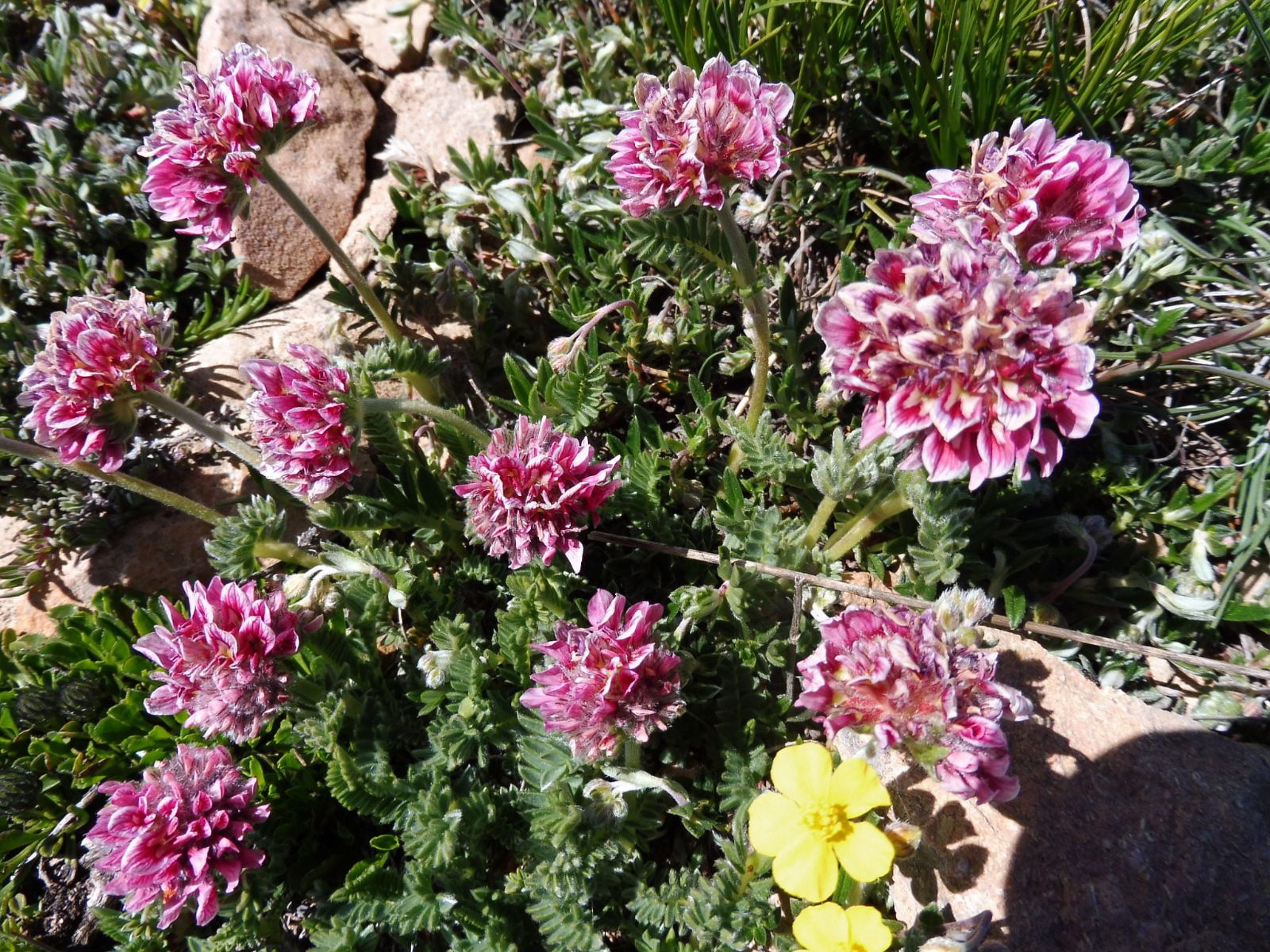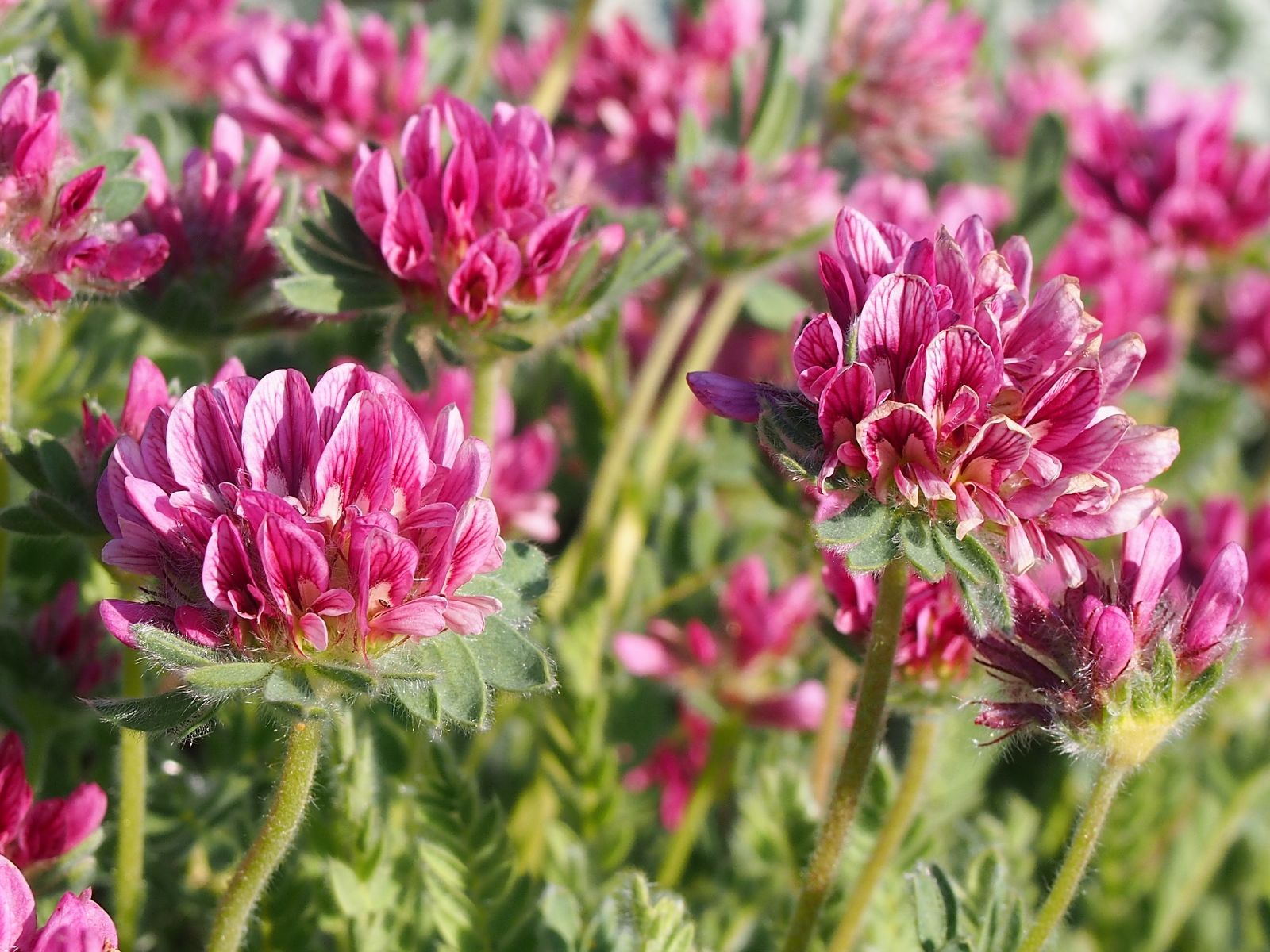Anthyllis montana
Sponsor
Kindly sponsored by
a member of the International Dendrology Society
Credits
Julian Sutton (2023)
Recommended citation
Sutton, J. (2023), 'Anthyllis montana' from the website Trees and Shrubs Online (treesandshrubsonline.
Genus
Common Names
- Mountain Kidney Vetch
Deciduous sub-shrub to about 30 cm height, often forming large clumps. Leaves imparipinnate, 3–8 cm long, with 17–41 sessile leaflets; leaflets narrowly elliptic to narrowly obovate or oblong, pubescent on both surfaces; leaf bases dilated, membranous and hairy, sheathing the bases of the erect, hairy flowering stems. Inflorescence a dense, hemispherical, terminal head subtended by palmatisect bracts immediately below the flowers. Calyx tubular, the tube 2–5 mm, with teeth equalling the tube. Petals purple, pink or purple, the banner much longer than the others. (Tutin et al. 1968; Bean 1976)
Distribution Albania Algeria Austria Bulgaria Croatia France Greece Italy North Macedonia Romania Serbia Slovenia Spain Switzerland
Habitat Open rocky and grassy habitats in mountains, especially on limestone.
USDA Hardiness Zone 7-9
RHS Hardiness Rating H5
Conservation status Not evaluated (NE)
Mountain Kidney Vetch is something of a rock garden classic, but is only marginal to our project as a sub-shrub with herbaceous stems from short woody bases and rootstock. It forms dense clumps of short, erect or ascending stems capped by showy heads of flowers in summer.
There is some variation within the species: two or three subspecies are often recognized but they are ‘rather indistinct’ though more or less correlated with geographical distribution (Tutin et al. 1968). The type subsp. montana (calyx tube and teeth both 4–5 mm, bracts not usually longer than flowers, corolla purplish, often with a darker blotch on the banner) is found in the Alps from France to Austria, and in the Appennines. Subsp. jacquinii (Rchb.f.) Rohlena (calyx tube and teeth both 3–4 mm, bracts usually longer than flowers, corolla pink and not usually blotched) is found in the eastern part of the range, in the eastern Alps and the Balkans; the two intergrade. Populations in southern Spain (calyx tube and teeth both about 2 mm) are sometimes segregated as subsp. hispanica (Degen & Hervier) É.Rev. (Tutin et al. 1968), otherwise included in subsp. montana (Royal Botanic Gardens, Kew 2023). The name var. atropurpurea Vuk. has sometimes been used for richly coloured forms.
Apart from its neat, appealing habit, flowers are a major attraction. A dusky shade in the difficult area between red, pink and purple is the norm in gardens, usually with a darker blotch. Seed raising is common, and there is inevitably some colour variation amongst seedlings. The hairy leaves are an added attraction, pale, almost silvery in wild plants but this is less obvious in lowland British gardens (Bean 1976).
It has been grown in European gardens for centuries, proving widely hardy; Aiton (1789) noted British records going back at least to 1759. It is also likely to suit much of the more temperate parts of North America, where it is recorded from gardens as climatically diverse as New York Botanical Garden and Denver Botanic Gardens (Royal Botanic Garden Edinburgh 2023).
'Rubra'
Awards
AGM
In practice this name seems to be used for the typical seed strain of European gardens, with dusky red-pink-purple flowers, blotched darker on the standards. It is explicitly marketed as a seed strain by many nurseries and seed suppliers (eg. Jelitto 2023). A trawl of online images suggests that it is sometimes confused in the nursery trade with A. vulneraria var. coccinea (scarlet flowered and entirely herbaceous).


